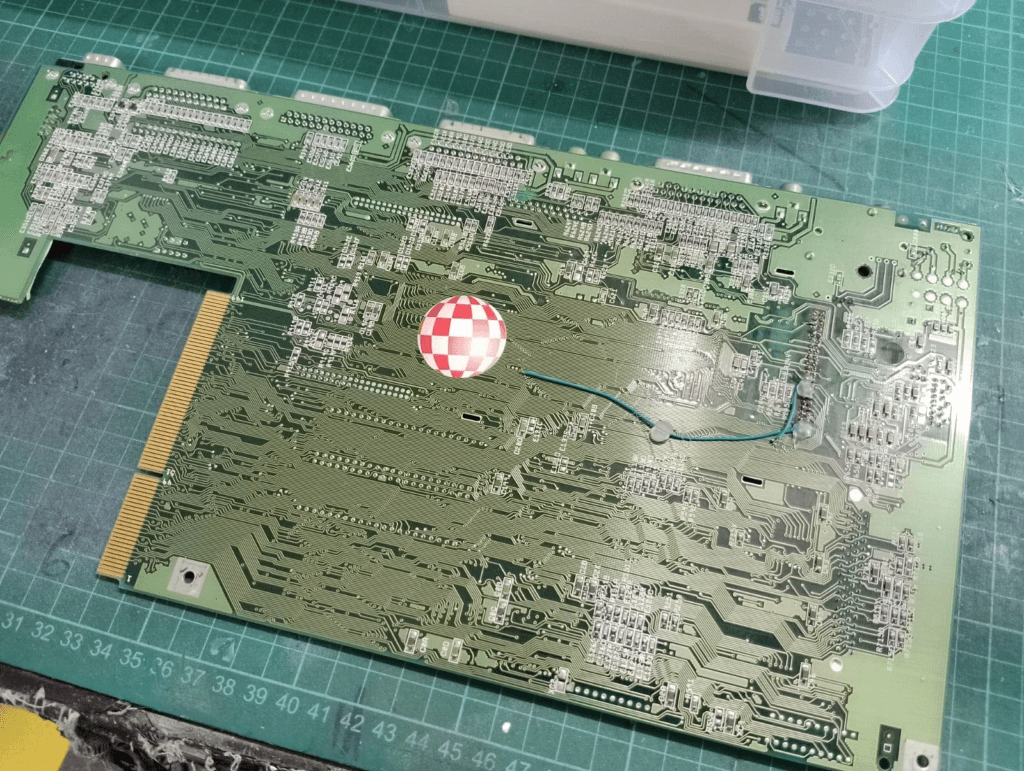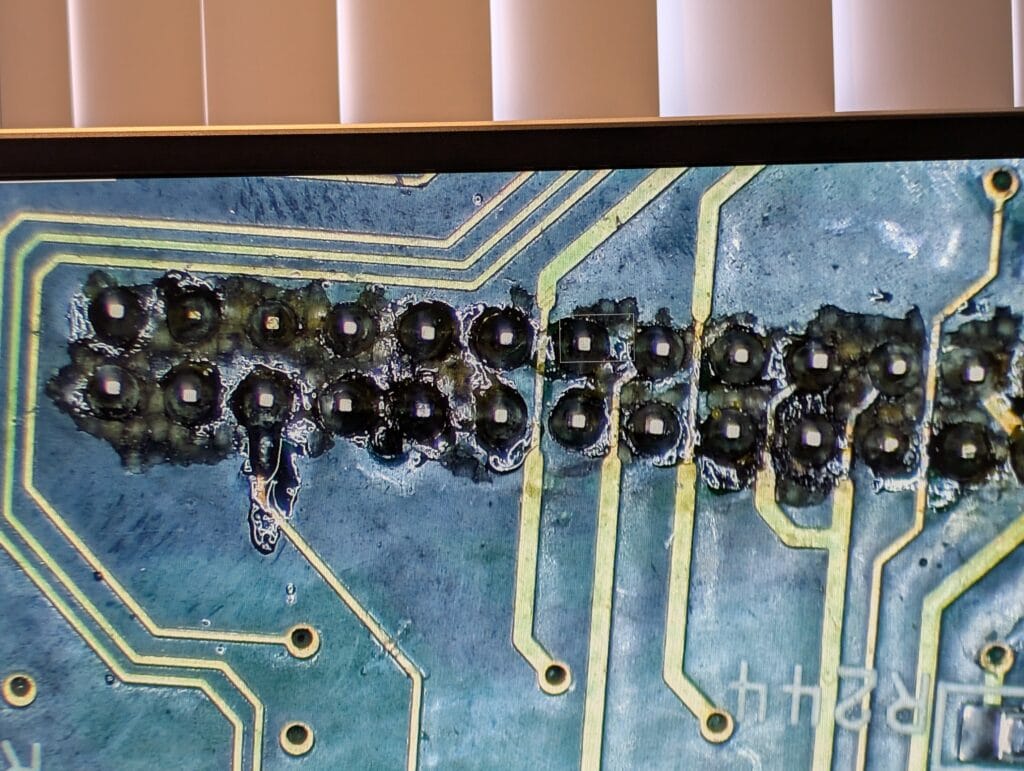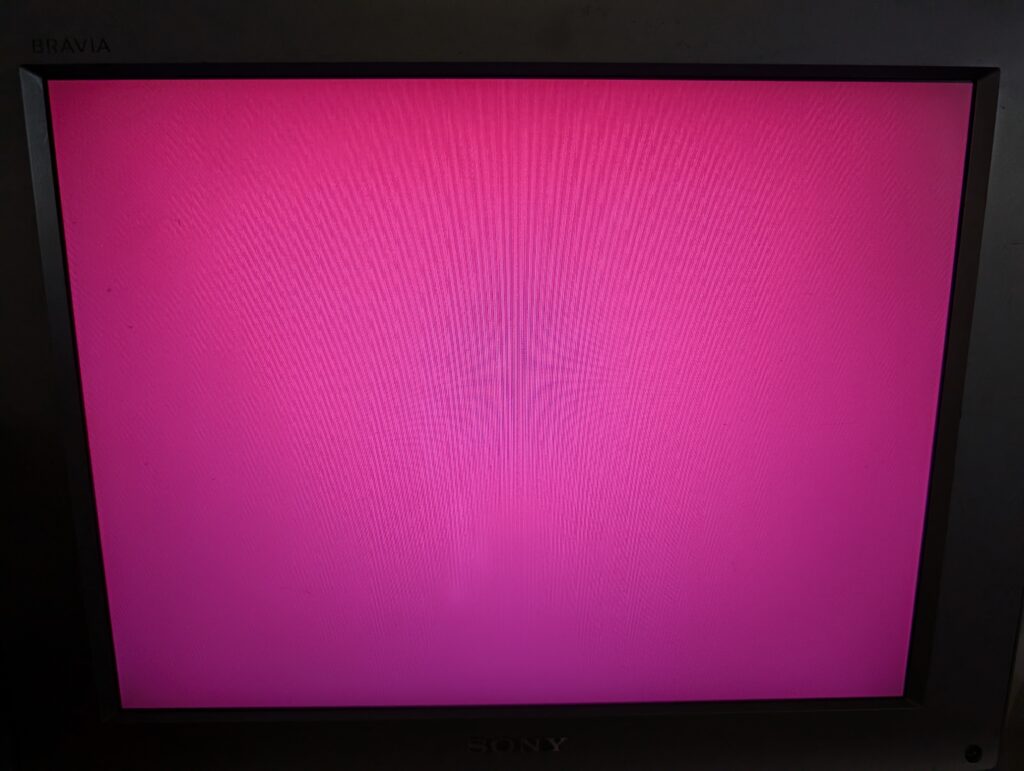I recently acquired an Amiga 1200 motherboard in a spares/repairs condition for about £100 recently. There was evidence of a repair in the past, but I wanted to see if it was something I could get running.
The Motherboard
These are the photos from the auction. There was pretty much no description beyond:
SOLD AS SHOWN
NO RETURNS ACCEPTED
BOARD POWERS ON, NO IMAGE


From these photos, we can see:
- It has no ROMs installed, might be why there is no image?
- It is missing the cable for the mouse port that you would normally find with a revision 1D4 board
- There are a couple of patch wires glued to the IDE port
- It looks like there has been an attempt at recapping it
- Someone stuck boing ball stickers on it
Even if I couldn’t get it working, the parts on the board that are worth more than I paid.
Analysis
When it turned up, I took a look at the patch work done. Someone has replaced the IDE port, but has not done a very good job. This is what the patch wires were for, and both of them are broken. I removed them to take a better look.



The patches appear to be for D16 and D24 on the IDE port, this is something to fix properly later, but as long as there are no shorts, it shouldn’t cause a problem for the rest of the machine.
Removing the top boing-ball, we can at least see one of the companies who worked on it in the past. I hope it wasn’t them who did the IDE work or recap.

First Boot
I thought I’d try DiagROM in this machine first, as there was a good chance of more problems with the board. Sure enough, there was strange behaviour, but this strange behaviour led to me immediately finding the problem.



The screen is flashing between two colours and the text on the serial port is coming out scrambled, but it is clear that it is doing a normal DiagROM text pattern. I’ve seen this behaviour in an Amiga 4000 before, and it tells me a few things:
- Communication between the ROM and the CPU is likely working fine
- Most of the chipset is likely working (CIA, Lisa, Gayle and Alice)
- One of the data lines to Paula is likely bad
Paula executes the parallel to serial conversion for the serial port. On the 32bit Amigas, it is connected to the high word of the data bus.
Now, let’s look at the text itself. It should start with “Amiga DiagROM V1.3”. I could have picked any character in this, but I picked the space because it is easy. The ASCII for space is 0x20, instead we have a bracket “(” in its place, this is 0x28 in ASCII. This indicates that 0x08 or bit 3 (when starting from zero) is stuck on.
We know this is on the high word, so in reality it is data bus line 19 at fault. This goes from the CPU, through the high word ROM and to the rest of the machine’s bus.

The CPU is on the bottom edge of this picture, the colour trace is D19. It goes through the ROM, north through the board and continues to the clock port and then the rest of the machine. I’ve deliberately cropped it here for reasons that will become apparent.
Repair
With a multimeter in continuity mode, I quickly found the above long trace from the ROM to the via at the top of that image had broken. So, it required a quick patch wire.

Not a perfect patch, but good enough to test. I’ll probably route the final fix via to via rather than ROM socket to clock port. With that, time to test.

Bingo! In less than 15 minutes, I went from opening the box to a booting Amiga 1200 board.
Conclusion
There is going to be more work to do on this board, I haven’t tested everything yet. But from a quick test, I know that:
- The IDE port will likely need a cleanup and repair.
- The digital switch for the audio filter appears to be faulty. That is probably a bad JFET or passive, shouldn’t be too hard to fix.
- Composite and RF out are dead, which means that it is highly likely that the filter circuit for the CXA1145 is bad
All these things should be relatively simple to fix at a later date. I figured using DiagROM in this way to diagnose a fault might be useful to some people.


Leave a Reply